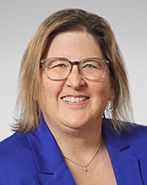The number of senior citizens in Kansas continues to grow, which is increasing demands on the healthcare system. Meanwhile, the recently approved federal funding reductions could strain the ability of hospitals and nursing homes to provide care to seniors.
There were 528,177 Kansans 65 or older as of July 1, 2024, according to newly released Census Bureau estimates. That’s an increase of 55,594, or 11.8%, from 2020.
The percentage of Kansans 65 and older also increased from 16% in 2020 to 18% in 2024.
The number of senior citizens has been growing steadily and is expected to continue to increase. This so-called “silver tsunami” is impacting many parts of society, including healthcare.
Seniors tend to visit physicians more frequently, require more diagnostic tests and are more likely to be hospitalized. They also use more long-term services such as home healthcare, rehabilitation and nursing homes. As life expectancy increases, so does the need for end-of-life care and support for cognitive decline.
Meeting these needs will be challenging. Healthcare organizations are struggling to find enough workers, and many senior caregivers are immigrants who are worried about their futures.
Many current healthcare professionals, including physicians, are nearing retirement themselves.
Low reimbursement rates already were creating access problems. An MSSC survey this spring of primary care physicians found that only 35% were accepting new Medicare patients. If physicians working at safety net clinics and family medicine residency programs weren’t included, the total dropped to less than 13%.
Though the “Big Beautiful Bill” includes a temporary, one-year 2.5% increase to Medicare physician reimbursements, it cuts about $1 trillion in Medicaid funding over the next decade. These cuts will particularly impact hospitals and nursing homes.
“Via Christi already experienced a $13.1 million shortfall in Medicaid reimbursement in 2024, a gap that would only widen from the proposed cuts,” Ascension Via Christi CEO Kevin Strecker wrote last month. “Other Kansas hospitals, especially those in rural areas, would face similar challenges.”
Sixty-three rural hospitals are already at risk of closure, and 87% of Kansas rural hospitals are operating in the red, according to the REACH Healthcare Foundation and the United Methodist Health Ministry Fund.
The new law creates a $50 billion fund to cushion the blow to rural hospitals and community health centers. Advocacy groups argue that the fund isn’t large enough to make up for the loss in funding and wouldn’t help urban-based providers that care for the vast majority of Medicaid enrollees.
Meeting the medical needs of seniors

MSSC asked Donna Ewy, MD, associate professor in the KUSM-Wichita Department of Family & Community Medicine, about caring for senior citizens.
How is KUSM-W preparing future physicians to meet the growing need of senior medical care?
In Family Medicine, we address assessing and addressing sensory impairments, fall risk, functional and cognitive declines, as well as caring for people with disease states that impact people as they age. These factors are impacted not only by the aging process itself but also by many social determinants of health, which students must explore and attempt to find solutions. Access to healthcare, costs of care, and factors such as isolation and bereavement are considered.
Does the training include advance directives?
Establishing goals of care and advance care planning requires a skill set for having sometimes difficult conversations. These skills are practiced in the context of discussions regarding DNR, DPOA, TPOPP and living wills. Many medical students are very empathic caregivers, and they also require practice with using the most effective approaches to having these discussions.
What are some of the access-to-care challenges facing seniors?
Simply finding physicians or medical services that accept whichever variation of Medicare a patient has can be challenging. Transportation to doctor offices can be a challenge when one loses the ability to drive. This becomes even more complicated when the person experiences challenges such as mobility impairment, confusion or incontinence.
Assisted living and long-term care facilities are very expensive. For now, Medicaid covers long-term care when one’s assets are gone, but the Medicaid reimbursement rate is generally below the cost of care, making this a challenge for LTC facilities to remain viable. The pending cuts in Medicaid reimbursement will seriously exacerbate this problem.
As people age, their medical issues increase in complexity. Numerous medical issues treated with many medications require longer office visits than are often allotted by clinics. Challenges such as hearing impairment or some cognitive loss can severely exacerbate this problem of time.



